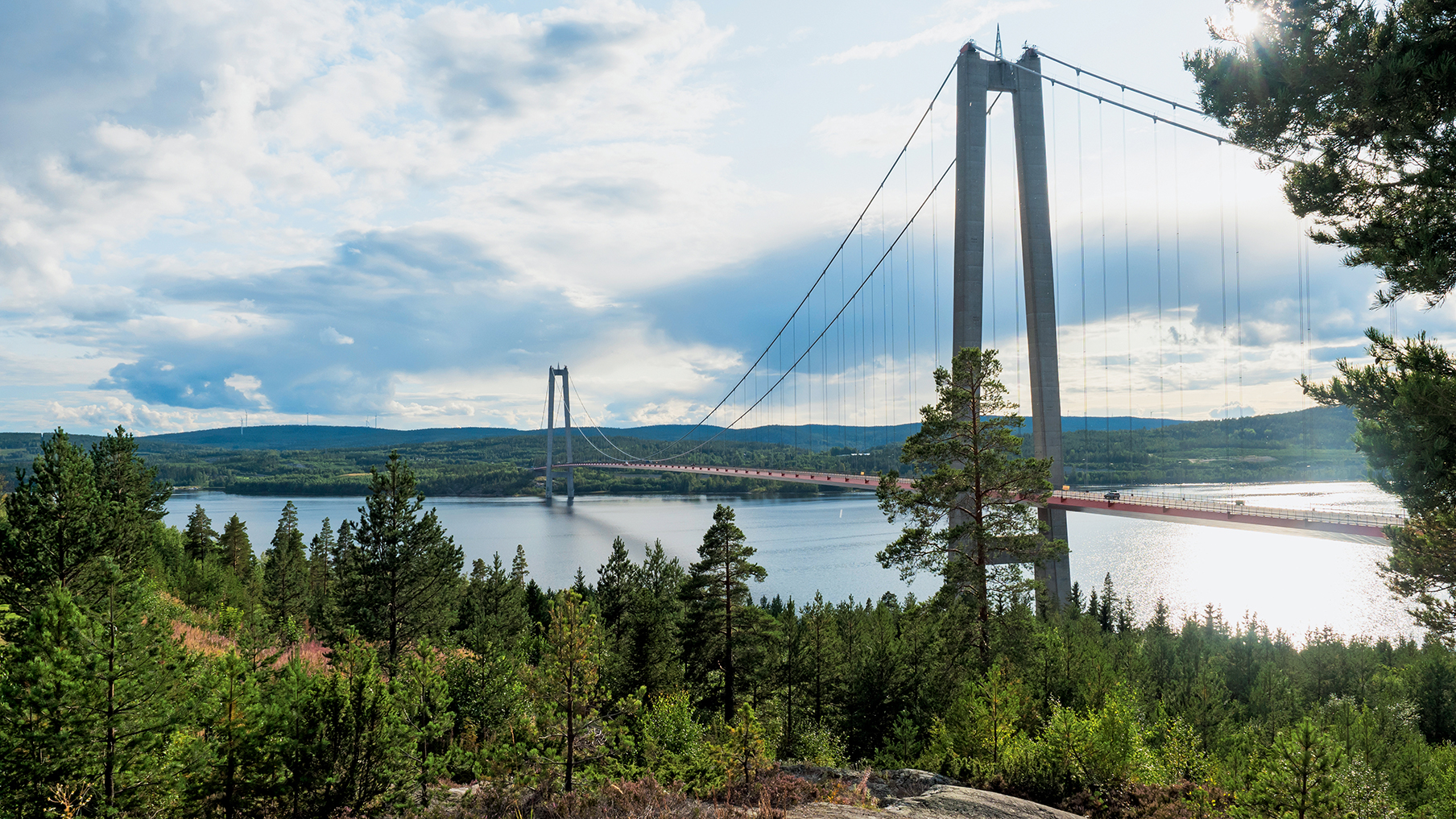Picture this: you are on the top of a mountain on a clear day with the view of some of Sweden’s 270,000 islands stretching out over the water below. You are on Skuleberget, the highest point of the highest coastline in the world where you have been exploring the accessible trails at the peak. And you have reached it by a fully wheelchair accessible chairlift.
Yet this is not a dream. Welcome to Sweden’s High Coast, or Höga Kusten.
At 286m, the High Coast of Sweden is aptly named. It is a magnificent, historic landscape full of mountains, lush forest, glorious islands and interesting architecture. And the food is fantastic: local, seasonal and fresh, cooked in creative, inspiring ways.

Sundsvall
My journey started in Sundsvall, a fascinating city around three hours by train from Stockholm. It was a straightforward journey, with dedicated wheelchair spaces, which could be pre-booked. It is unique in being the only stone–built city that far north in the world. Sundsvall was peaceful but lovely to explore.
It had interesting architecture, fascinating industrial heritage, great restaurants and design–led shops, along with a recently developed waterside area. I stayed at the Elite Hotel Knaust, a heritage hotel, which has played a large part in the city’s history and offered fully accessible rooms.
Skuleskogen National Park
An hour and a half from Sundsvall, the Skuleskogen National Park offered glorious hiking routes through thickly wooded forest, down to secluded little bays, many of which were fully accessible. The West Entrance particularly signposted many accessible routes, either along boardwalks or well–designed tracks, which enabled us to get right into the heart of the forest.
Swedish children are brought up on tales of mythical forest creatures and I loved the Spellbound In Sweden experience – a haunting audio story based on Swedish folklore – which saw me don headphones and immerse myself in spooky tales of these fantastical creatures in the quiet surroundings of the woods.
Naturum, at the foot of Skuleberget in the national park, offered a fascinating insight into the history and geology of the area. A visitor centre with many informative and interactive displays, all on one level, it also had a wealth of information regarding other accessible options in the region.
TOP TIP
The best time to see the Northern Lights, or Aurora Borealis, is between October and April.
Ulvön Islands
An absolute highlight was my visit to the Ulvön Islands; utterly tranquil and beautiful, with wooden houses and stilted boathouses on the water’s edge, where the locals come to relax. With only 40 permanent residents on North Ulvön, it was idyllic. I also tried the local, but divisive, delicacy ‘Surströmming’, fermented herring, which the Swedes have entire parties to celebrate!

Mannaminne
Mannaminne - the passion project of artist Anders Åberg - was quirky and unique. Realising not everyone could travel, he decided to bring the world to them. His vision resulted in a collection of 53 buildings, each representing both a different part of the globe and Åberg’s incredible creativity. Every single part of each display was made by him. Whether it was the giant rotating globe, which filled a whole room, or the ship within a house, it was incredible in its detail. While only around 70 per cent of the site was accessible, that was more than enough to keep anyone busy for days.
The culinary experience
Another high point of the High Coast were the very special artisan producers I visited. These included Mjälloms Tunnbröd, Sweden’s oldest flatbread bakery, who have been baking in the same way for 101 years. Hernö Gin provided a great afternoon out, and the chance to try out some of the award–winning World’s Best Gin. I also enjoyed a tour of High Coast Whisky, a similarly award–winning whisky distillery where I was tempted by the opportunity to do a week–long course to learn to make my own.
I said goodbye to Höga Kusten with dinner overlooking the Högakustenbron. At 1800m long, this is the longest suspension bridge in Sweden and one of the longest in the world. An impressive structure, it spans the Angermanälven river and masters the surrounding landscape. In the early evening, the light catches the red metalwork, making it positively glow; a stunning setting to end a stunning trip.
CHERYL EVERITT
Cheryl Everitt is the founder of A Wheel and Away, an accessible travel consultancy. She is passionate about accessible travel, being mum to two young people who are also wheelchair users. As a family, they love to explore different and off–the–beaten–track destinations.





